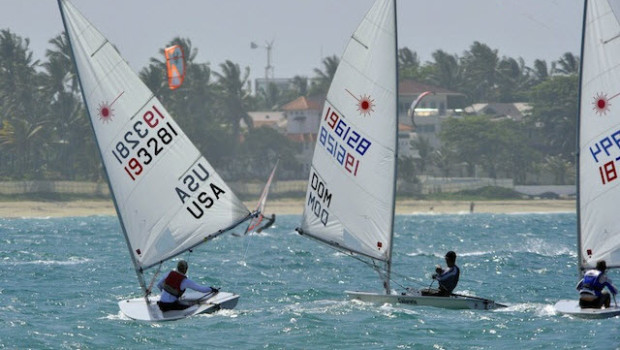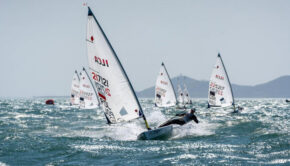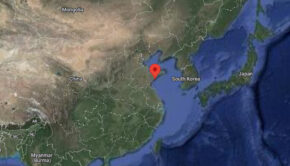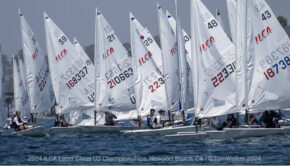Laser Class: Disruption and Confusion
Published on September 29th, 2015
It would seem unfathomable that the Laser class could be headed toward hard times. Few classes attract the kind of activity seen at Laser events, but disruption and confusion on the supply-side is taking its toll.
At the 2015 Laser Worlds in Canada, all the new boats delivered had ‘Made in USA‘ stickers on them, despite Lasers not being produced in the USA. Hmm! As for getting class legal Laser parts in North America, forget about it. The availability of blades has been more soap opera than symphony.
There is also questions about whether the class legal Lasers are legal, which a protest at the Pan Am Games this summer sought to determine. Ari Barshi, founder of the popular Laser training facility in the Dominican Republic, tells the story…
Laser decks and bottoms are built in two separate molds. Due to the nature of fiberglass and resin, finished decks and bottoms fluctuate in weight. To assure each boat leaves the factory at the correct weight, the builder matches light decks with heavy bottoms and vice versa.
But is it possible that a Laser builder knowingly and intentionally matched light decks with light bottoms for a preferred customer base? Laser champ Julio Alsogaray from Argentina certainly believes so. On July 15th 2015, during the Pan Am Games held in Toronto, Julio protested nine of the class elite sailors for racing on Lasers that don’t comply with class rules.
As you can see in the Jury Decision, the protest was denied. Julio had no proof of the legal weight of the Laser, and normal procedure and protocol were followed by the organizers to admit the boats in to the race. But with the growing pressure on sailors to win, looking for advantageous construction “tolerances”, and even altering boats and spars, is an issue that is on the mind of sailors of other Olympic classes as well.
Julio Alsogaray’s protest was denied also because all the boats in question had the ISAF Plaque.
It is time for ISAF to implement new and thorough boat and spars inspections before, and during its World Cups, and World Championships. These inspections should go beyond size and weight, to include stiffness, and weight distributions. In events of randomly allocated boats, re-allocation should be done daily to avoid any doubt of “controlled randomization” prior to the event.
ISAF must also have a way to implement heavy fines and punishments for builders, sailors, and governing bodies that turn a blind eye or take part in the construction of custom-made gear. Measurement tolerances should be reduced to fit today’s precise building technologies and market needs.
According to the Laser Class rules, the Laser is a strict one-design dinghy where the true test, when raced, is between helmspersons and not boats and equipment. ILCA must maintain the spirit of this rule, by making relevant portions of the ‘construction manual’ public, to remove any unfair advantage due to non-compliance with the Construction Manual.
If you are interested to read more about the ISAF plaque here is the Guide to ISAF Standard class rules.









 We’ll keep your information safe.
We’ll keep your information safe.